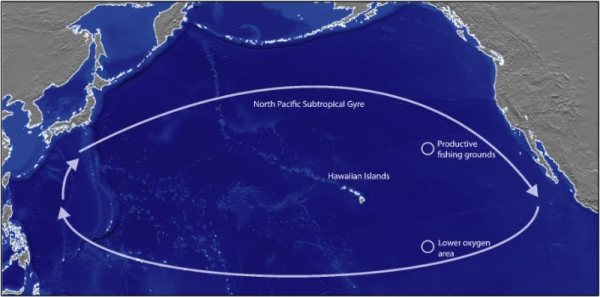On June 9, the NOAA Ship Oscar Elton Sette will depart Hawai‘i for a month-long mission to study a remote area of the North Pacific Ocean. Scientists from the Pacific Islands Fisheries Science Center will study the ecosystem. They will investigate its smallest inhabitants, marine bacteria and phytoplankton (microscopic plants), all the way to the animals that serve as prey for bigeye tuna, such as lanternfish and squid. The goal is to understand what makes an area good or bad habitat for bigeye tuna and how that environment might change in a changing climate.
The North Pacific Subtropical Gyre, the largest ecosystem on earth, supports a host of marine life. They include everything from oxygen-producing marine bacteria and phytoplankton to highly mobile apex predators like tunas, whales, and sharks. Across the boundaries of the gyre, there are distinct differences in oceanographic properties such as temperature, nutrients, and oxygen content. Scientists don’t fully understand how these differences influence highly mobile fish like bigeye tuna. This research expedition sets out to investigate these characteristics in an area to the east of Hawai‘i, about halfway to California. The edge of the gyre is likely to shift as a result of global climate change. Understanding the ecosystem there should allow scientists to better understand how it might change in the future.
Continue reading at NOAA Fisheries
Image via NOAA Fisheries


